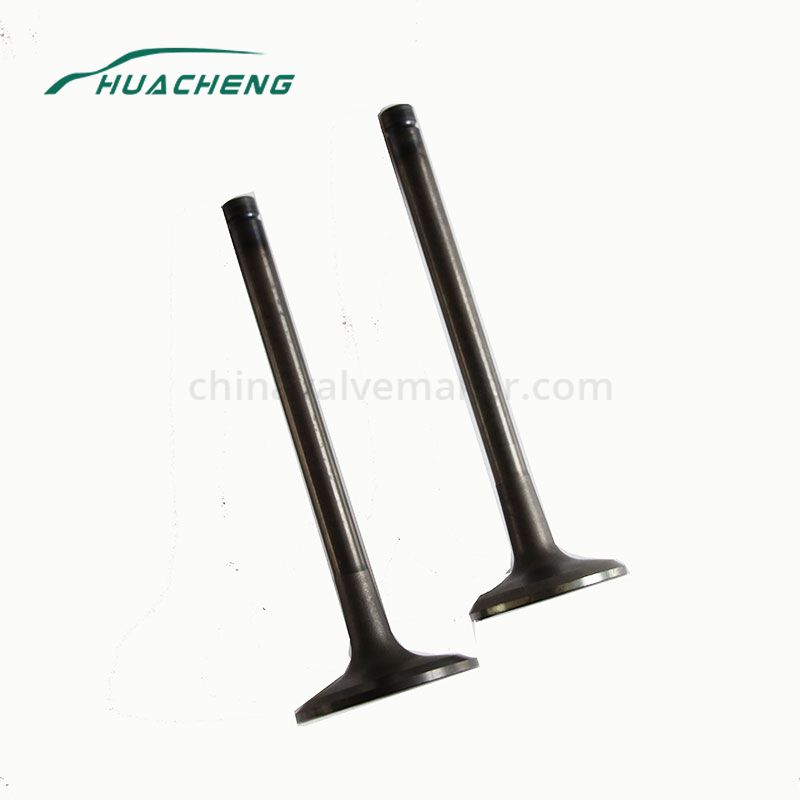You have heard of overhead valves when you buy power equipment, but what do they mean to you? Do you need an overhead-valve? Are they more expensive? What will they do for you?
In engines with overhead valves, the intake exhaust valves are located in the cylinder head instead of being installed in the engine block. Many large engine manufacturers still offer "standard" engines, whose valves are located in the cylinder block. Their "luxury" engines have overhead valves and a stronger structure. Overhead valves can extend engine life, improve fuel economy, and, in most cases, reduce engine maintenance.
To understand overhead valves, you need to have a basic understanding of how valves, cams, cranks, and strokes work.
Engine parts valve manufacturers configure the camshaft and valve block (VIB), overhead valve (OHV), and overhead cam (OHC) in the engine in three basic ways. The difference between these two engines is the position of the camshaft (it operates the valve). If the camshaft is located in the cylinder head, the engine uses an overhead cam design. If the camshaft is located in the engine block, the engine uses an overhead valve design. VIB designs have lower production costs and are usually used in low-end engines.
The system operating camshaft is located in the engine block of the overhead valve engine. The camshaft uses tappets, pushers and rockers to activate the valves. Its operation is quite simple, the same as the car engine. As the camshaft rotates, each eccentric cam lobe pushes the tappet or tappet. The upward movement of the tappet is transmitted to the rocker arm through the pushrod.
When the rocker arm rotates, this upward movement becomes a downward movement. Move down to open the valve. When the camshaft continues to rotate, the cam passes the tappet, closing the valve. The spring (attached to the valve) returns the valve to its fixed position. Each cylinder of an internal combustion engine has an intake valve and an exhaust valve. Both valves open and close the internal passage in the cylinder head. The intake valve is the larger of the two valves. It controls the fuel flow into the combustion chamber. The exhaust valve controls the exhaust gas from the cylinder.

The valve design features The valve consists of a round head, stem and groove on the top of the valve. The valve head is the large end that opens and closes the passage to and from the combustion chamber. The valve stem guides the valve up and down and supports the valve spring. The groove on the top of the valve stem secures the valve spring in place with a locking lock. The valve must be opened and closed to allow the air and fuel mixture to enter and then leave the combustion chamber. In order for the engine to run smoothly, proper valve opening and closing timing are required. The camshaft controls the valve sequence and timing.
Camshaft a camshaft consists of several camshaft journals and a set of cam lobes. The camshaft journal is the same as the crankshaft journal, fixing the camshaft in place. Bearings, placed around each journal, allow it to rotate freely. The cam lobe opens the intake and exhaust valves of each cylinder. The number of cam lobes is equal to the number of valves in the engine.
The angular positioning of the cam lobe on the shaft determines the opening and closing sequence of the valve. The design of the valve flap determines the height of the valve opening (lifting) and the time it remains open (sustained). These designs vary by the engine.
Previous: Actors Brake Pad Heavy Brake pad DISC brake pad
Next: 15HP OUTBOARD MOTOR (RED), 40hp enduro outboard motor,2-stroke outboard motor 3.5hp supplier
Copyright:@2020-2021
Comments Please sign in or sign up to post.
0
0 of 500 characters used